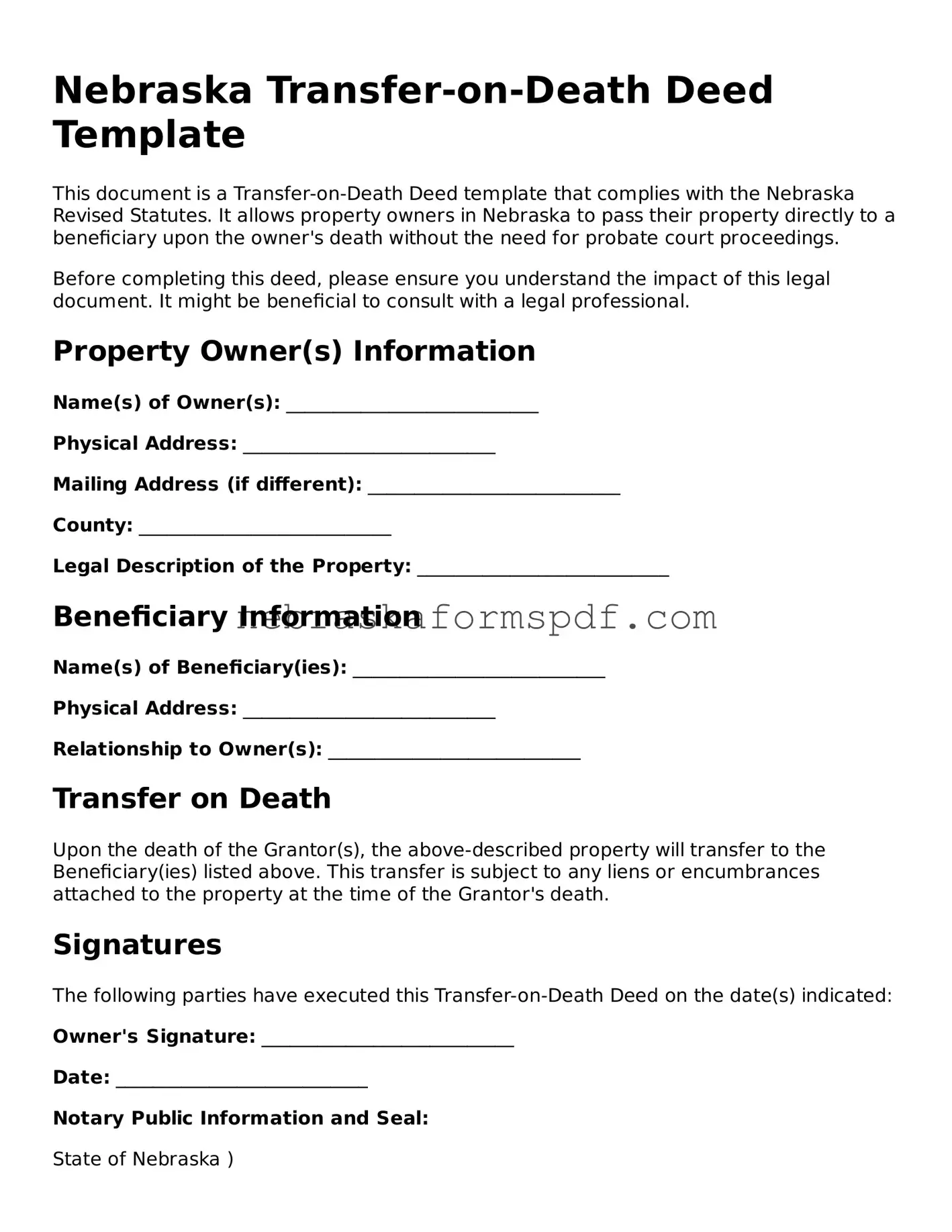Nebraska Transfer-on-Death Deed Template
This document is a Transfer-on-Death Deed template that complies with the Nebraska Revised Statutes. It allows property owners in Nebraska to pass their property directly to a beneficiary upon the owner's death without the need for probate court proceedings.
Before completing this deed, please ensure you understand the impact of this legal document. It might be beneficial to consult with a legal professional.
Property Owner(s) Information
Name(s) of Owner(s): ___________________________
Physical Address: ___________________________
Mailing Address (if different): ___________________________
County: ___________________________
Legal Description of the Property: ___________________________
Beneficiary Information
Name(s) of Beneficiary(ies): ___________________________
Physical Address: ___________________________
Relationship to Owner(s): ___________________________
Transfer on Death
Upon the death of the Grantor(s), the above-described property will transfer to the Beneficiary(ies) listed above. This transfer is subject to any liens or encumbrances attached to the property at the time of the Grantor's death.
Signatures
The following parties have executed this Transfer-on-Death Deed on the date(s) indicated:
Owner's Signature: ___________________________
Date: ___________________________
Notary Public Information and Seal:
State of Nebraska )
County of __________ )
Subscribed and sworn before me this ___ day of __________, 20__.
Notary's Signature: ___________________________
Printed Name: ___________________________
Commission Expires: ___________________________
This document does not take effect until it is recorded with the county recorder in the county where the property is located. All property owners are encouraged to discuss this document with their legal and financial advisors.
